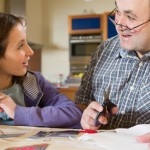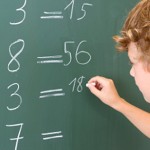2D and 3D Shapes Worksheet and Explanation
We’ve structured this information to help children with their education. It is targeted at children in years 5 and 6 and the questions for the worksheet have been stripped from past papers. Having an understanding of 2D and 3D shapes is part of the primary school curriculum and children will deal with 2D and 3D shapes in both KS1 and KS2.
The Information below will give an overview of the topic and we have included a detailed worksheet with full answers. The worksheet includes 30 2D and 3D shapes questions and is relevant for KS2 pupils approaching their SATS test.
Download Free 2D and 3D Shapes Worksheet – Questions
Download Free 2D and 3D Shapes Worksheet – Answers
If you are not ready to download the worksheets yet, then read on for some information about 2D and 3D shapes. This has provided to introduce the topics covered in the worksheet for those that might be unfamiliar but also as a quick revision tool for those that would like a quick refresher before accessing the worksheet.
2D and 3D Shapes Explained
What are 2d Shapes?
2d Shapes are flat shapes and are the shapes children are first exposed to, these include:
Square, Triangle, Circle, Pentagon, Hexagon, Octagon, Rectangle
What are 3d Shapes?
3d shapes are three dimensional. So rather than a flat square the 3d shape would be a cube, rather than a circle the 3d shape would be a sphere, rather than a triangle a 3d shape equivalent might be a pyramid.
3d shapes include the following:
Cube, Sphere, Cylinder, Pentagonal Pyramid, Hexagonal Prism, Triangular Prism, Square based pyramid.
What should children be learning about 2d and 3d shapes in KS1
Children will become aware of both 2d and 3d shapes and will learn to recognise some of the more common ones. So for instance they may learn 2 shapes like rectangles, circles , triangles and squares. And they may learn 3d shapes such as cuboids, spheres and pyramids.
They will then go on to learn some of the properties of these shapes. They’ll begin to work on symmetry and reflection of shapes. They’ll become familiar with terms such as edges, faces and vertices, and they’ll work on rotating shapes through a right angle.
What will children learn about 2d and 3d shapes in KS2
KS2 work involves becoming much more familiar with the properties of 2d shapes and 3d shapes.
Children will start with doing some more work on rotations and then will learn about horizontal and vertical lines and whether these are perpendicular or parallel. This work helps them to understand the properties of shapes and how they are made. Children will draw lots of shapes to re-enforce their learning.
The work on lines of symmetry will continue in addition to some work understanding shapes in terms of their interior and exterior angles.
Once children have learnt the basic relationships between angles and shapes they will move on to estimating angle sizes of acute, obtuse and reflex angles and they’ll work on identifying angle sizes with only partial information being given.
Towards the end of KS2 this work will be brought together and revised so that children have an in-depth knowledge of 2d and 3d shapes so that they can describe them, draw them and discuss angles within shapes and lines of symmetry. They will be able to name a series of shapes and identify the key elements of those shapes.






